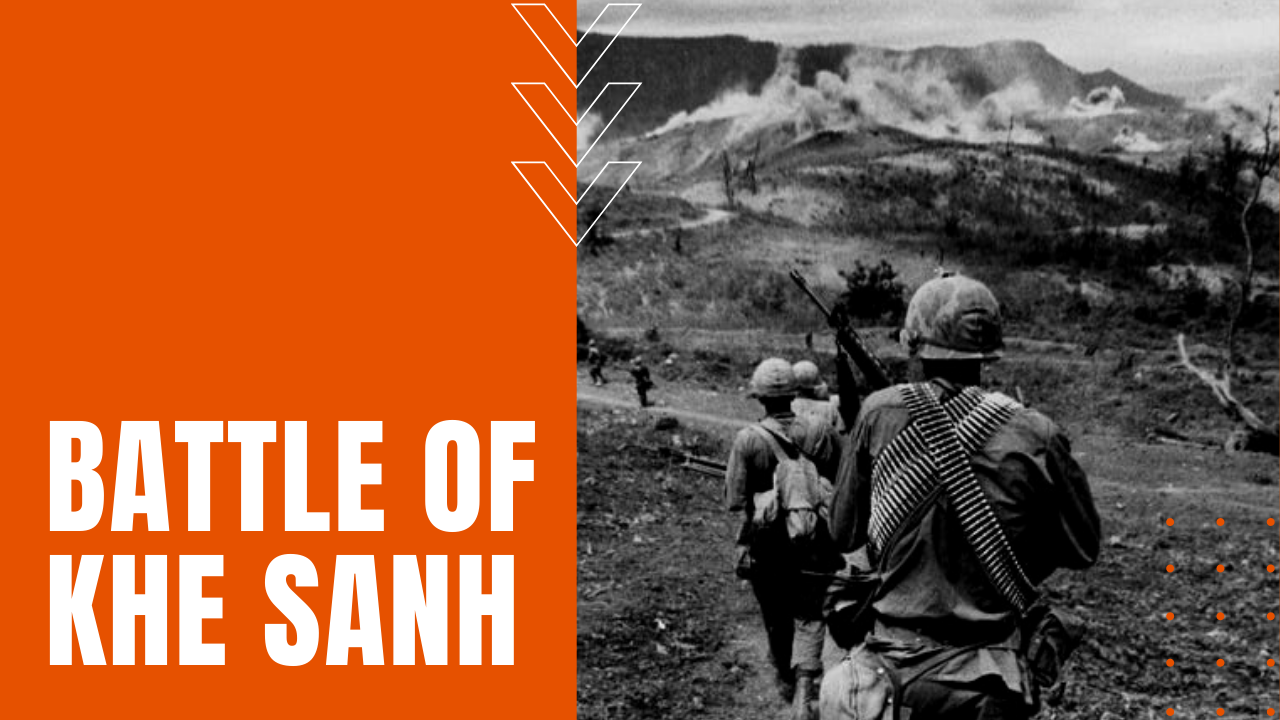Battle of Khe Sanh: A 66-day Siege During the Vietnam War

Positioned 14 miles south of the demilitarized zone in northwestern Quảng Trị Province and six miles from the Laotian border, the U.S. Marine base at Khe Sanh had been set up as a staging point for future planned operations against the North Vietnamese Army’s resupply route along the Ho Chi Minh Trail.
Khe Sanh
The Khe Sanh Combat Base, known as KSCB, was defended by two regiments of the U.S. Marine Corps, elements of the U.S. Army and Air Force, as well as a small contingent from the army of the Republic of Vietnam or ARVN.
What Happened at Khe Sanh?
The battle broke out on January 21st, 1968, when the 3rd Battalion, 26th Marines came under fire from a North Vietnamese battalion positioned atop two hills northwest of the base. A day later, North Vietnamese forces captured the nearby village of Khe Sanh, while Viet Cong artillery positions began a long-range bombardment campaign of the base itself, hitting the main ammunition depot, which exploded some 1,500 tons of munitions with devastating consequence.
Pinned down in their trenches and bunkers, the Americans at Khe Sanh endured a 66-day siege that tested the mettle of every man involved. Unwilling to risk the usual air resupply that had existed before the North’s offensive, during the siege of Khe Sanh, U.S. planes dropped 100,000 tons of bombs on suspected North Vietnamese positions, while U.S. ground forces fired 158,000 artillery rounds in defense of the beleaguered base.
Operation Pegasus
In March that same year, an overland relief expedition known as Operation Pegasus was launched by a combined Marine–Army/ARVN task force, which saw success in early April, when the 1st Cavalry Airmobile and a South Vietnamese battalion pressed in on the base from the east and south, while the Marines pushed westward with an objective of re-opening Highway 9, which intersected the Ho Chi Minh Trail at the Da Krong Bridge.
The Siege of Khe Sanh was finally broken on April 6th, 1968, after U.S. cavalrymen joined up with the 9th Marines south of Khe Sanh airbase, while a week later, the 3rd Battalion, 26th Marines scattered North Vietnamese positions atop Hill 881 North.
What Was The Outcome of Khe Sanh?
American commanders considered the defense of Khe Sanh an enormous success—prompting commanding General William Westmoreland to contend that if the base had fallen, the North Vietnamese might well have outflanked other vital Marine positions along the demilitarized zone. Shortly after the siege was lifted, the decision was made to dismantle the base rather than risk additional battles in the future.
By the time the last fighting ended around nearby Hill 689, 274 Americans had been killed in action, while an additional 2,541 were wounded. Losses for the North Vietnamese Army remain unknown due to the widespread practice by U.S. military leaders to over-exaggerate North Vietnamese casualties, but a secret joint-service command report by the U.S. Defense Department’s MACV, later estimated a North Vietnamese death toll of 5,550 soldiers, making the Battle of Khe Sanh, one of the bloodiest, protracted engagements during American involvement in the Vietnam War.
